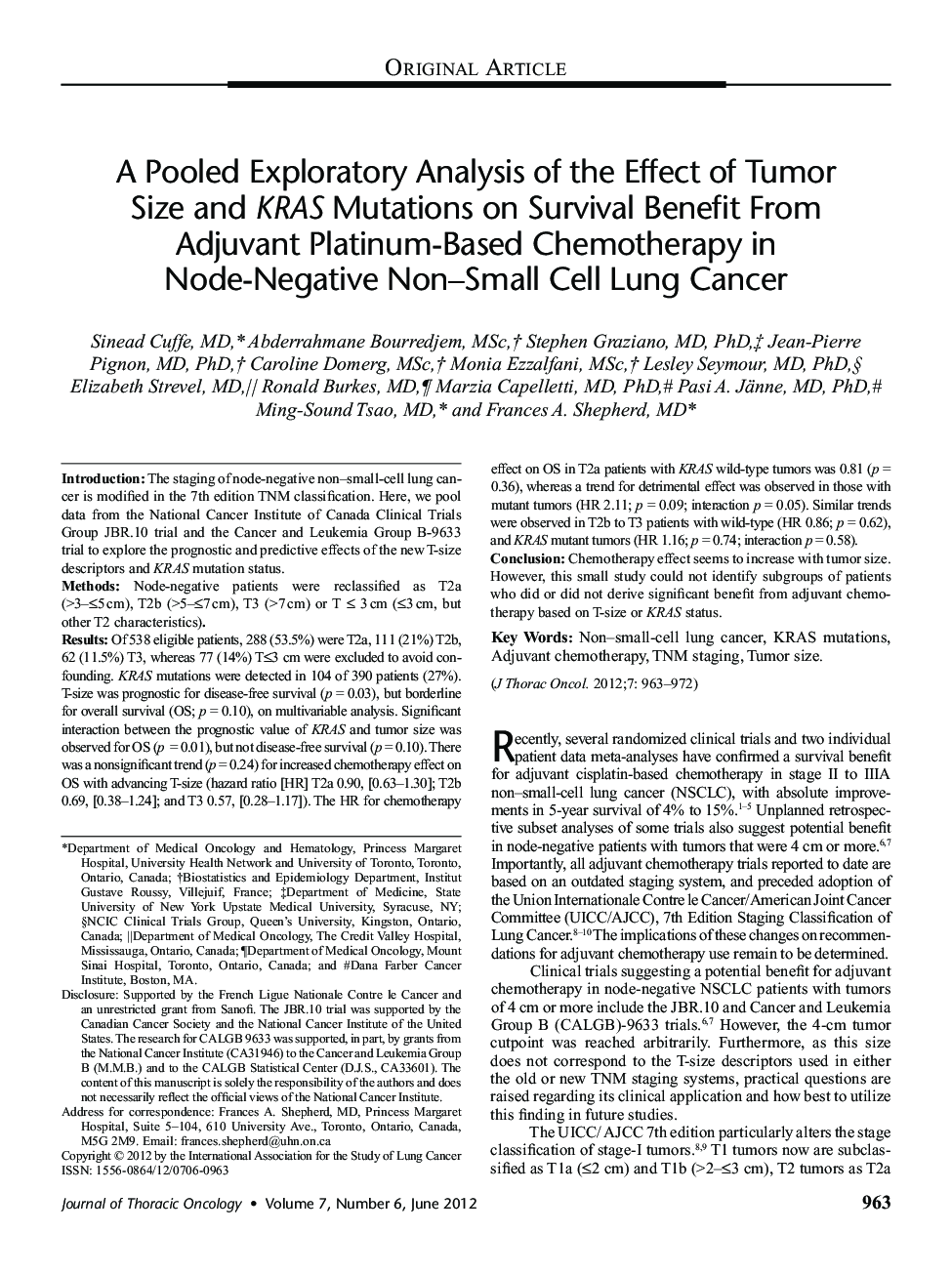| Article ID | Journal | Published Year | Pages | File Type |
|---|---|---|---|---|
| 3990654 | Journal of Thoracic Oncology | 2012 | 10 Pages |
IntroductionThe staging of node-negative non–small-cell lung cancer is modified in the 7th edition TNM classification. Here, we pool data from the National Cancer Institute of Canada Clinical Trials Group JBR.10 trial and the Cancer and Leukemia Group B-9633 trial to explore the prognostic and predictive effects of the new T-size descriptors and KRAS mutation status.MethodsNode-negative patients were reclassified as T2a (>3–⩽5 cm), T2b (>5–⩽7 cm), T3 (>7 cm) or T ⩽ 3 cm (⩽3 cm, but other T2 characteristics).ResultsOf 538 eligible patients, 288 (53.5%) were T2a, 111 (21%) T2b, 62 (11.5%) T3, whereas 77 (14%) T⩽3 cm were excluded to avoid confounding. KRAS mutations were detected in 104 of 390 patients (27%). T-size was prognostic for disease-free survival (p = 0.03), but borderline for overall survival (OS; p = 0.10), on multivariable analysis. Significant interaction between the prognostic value of KRAS and tumor size was observed for OS (p = 0.01), but not disease-free survival (p = 0.10). There was a nonsignificant trend (p = 0.24) for increased chemotherapy effect on OS with advancing T-size (hazard ratio [HR] T2a 0.90, [0.63–1.30]; T2b 0.69, [0.38–1.24]; and T3 0.57, [0.28–1.17]). The HR for chemotherapy effect on OS in T2a patients with KRAS wild-type tumors was 0.81 (p = 0.36), whereas a trend for detrimental effect was observed in those with mutant tumors (HR 2.11; p = 0.09; interaction p = 0.05). Similar trends were observed in T2b to T3 patients with wild-type (HR 0.86; p = 0.62), and KRAS mutant tumors (HR 1.16; p = 0.74; interaction p = 0.58).ConclusionChemotherapy effect seems to increase with tumor size. However, this small study could not identify subgroups of patients who did or did not derive significant benefit from adjuvant chemotherapy based on T-size or KRAS status.
